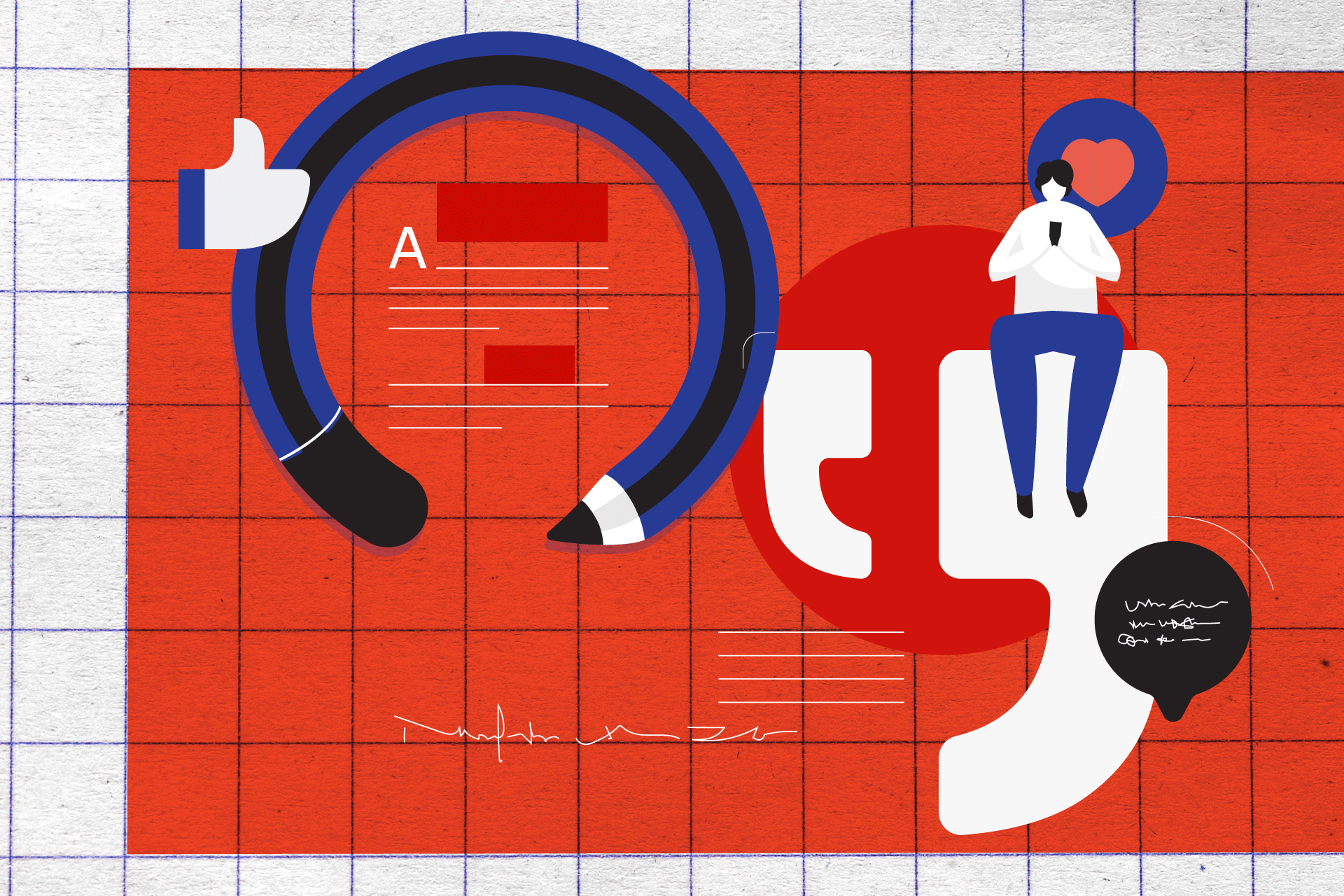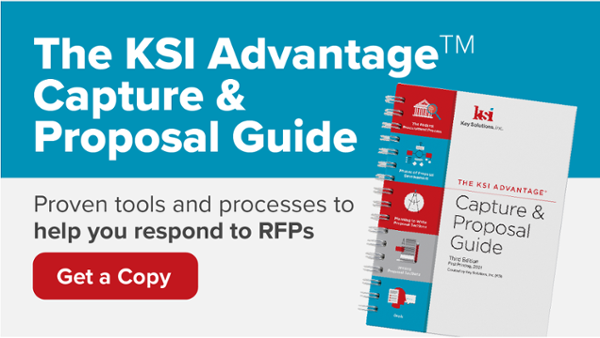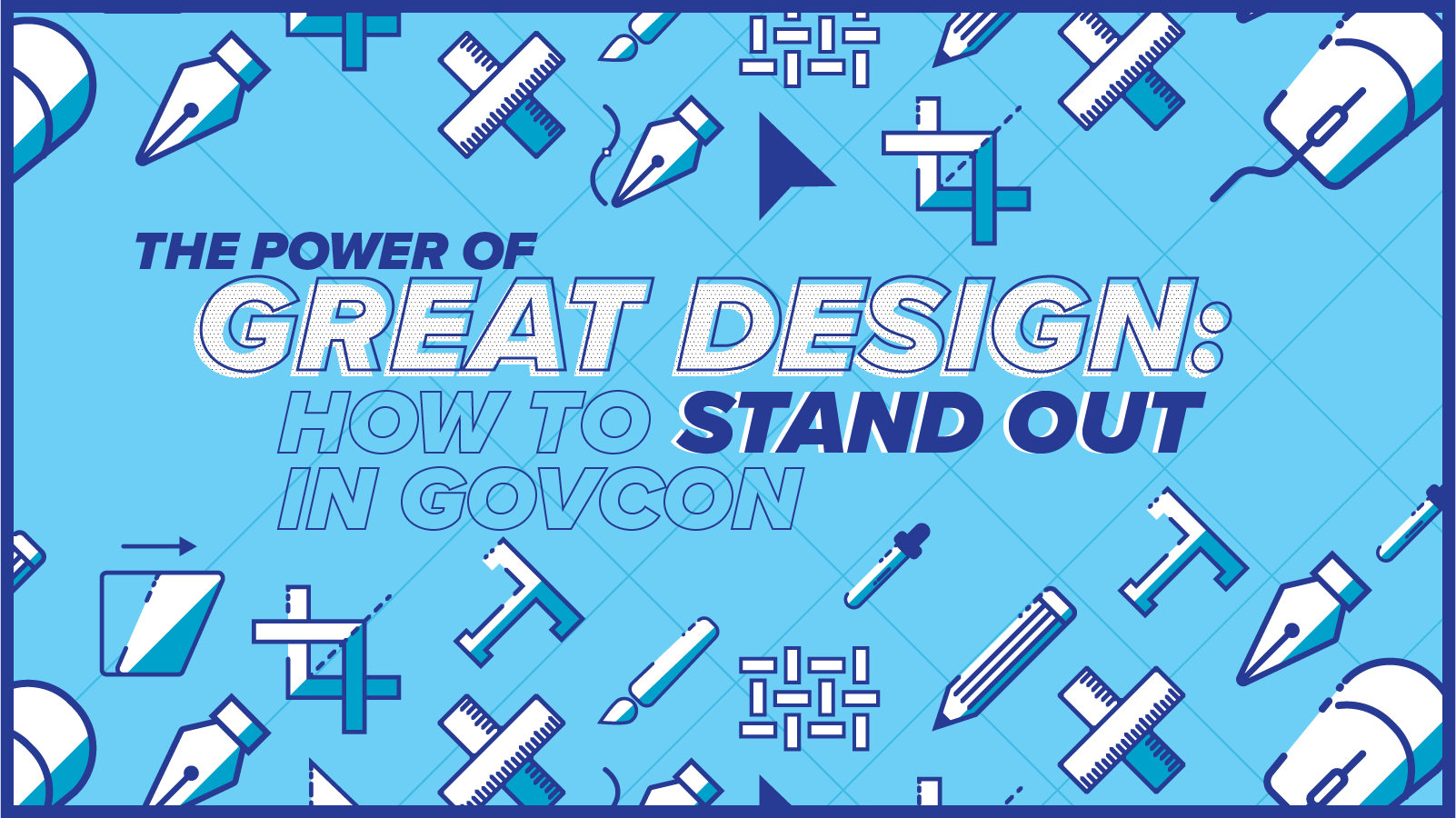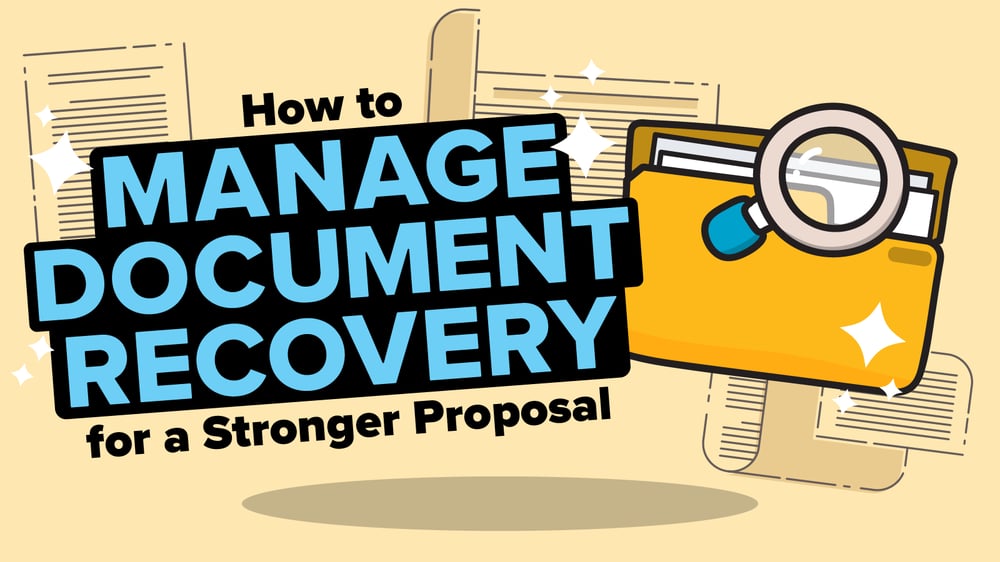
Everyone knows that color team review phases are essential to the development of winning proposals.
It is important to remember however that the review itself is only half of the process. Document recovery is the process of collecting all the feedback and comments from your review team and integrating changes and edits to your document to prepare a final document that's fit for the next stage of the review cycle.
Practicing effective recovery periods between each review phase is what will push your document to the next level and ensure that you are squeezing every bit of value from your review cycles and creating the strongest proposal you can before your next color review.For proposal managers, it is critical that you establish clear recovery goals early and have processes in place for your team in order to facilitate the development of better content. This will increase your proposal’s overall responsiveness with compelling writing, which will lead to higher evaluation ratings.
In this article we will explain how to practice effective document recovery by focusing on the following tasks:
- Hold a Comprehensive Review Debrief
- Address Comments Through an Integrated Approach
- Host Individual Author Strategy Sessions
- Review for Graphics and Tables
Hold a Comprehensive Review Debrief
During your review, you should ask each of your reviewers to fill out a template with their feedback for each section or volume that they review.
Depending on your team composition, you may also want to have reviewers include contact information in case authors need to reach out to reviewers during recovery. You should also be sure to adjust your rating criteria for reviewers according to the solicitation requirements (e.g. Color Scores, Pass/Fail, etc.) An example of the completed feedback template is below:
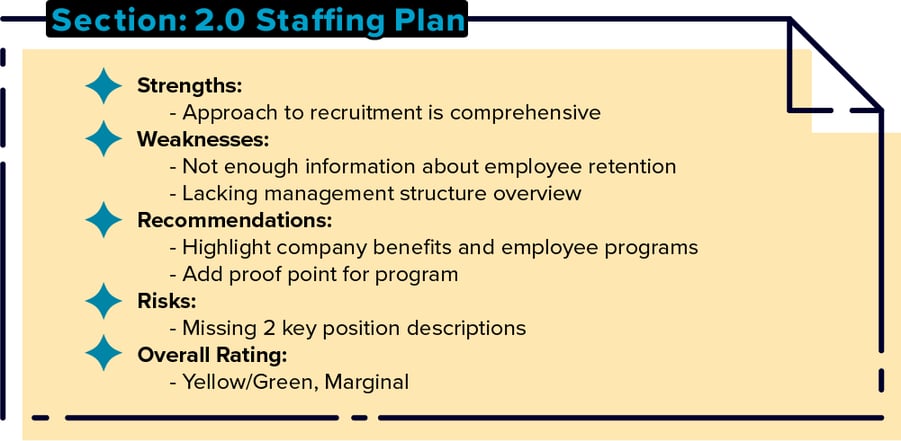
In addition to this feedback slide, your reviewers will have left comments in the document itself. As a proposal manager, you should use both of these resources to prepare a debrief that gives your authors a clear path forward to the next steps. Consolidate all reviewer feedback cards into a presentation by each volume/section and read through the entirety of the reviewer comments to capture any additional information for your authors that may not be included in the feedback cards.
Once you’ve gathered all this information, you can easily provide your writing team with a breakdown of strengths, weaknesses, and recommendations section by section. While you’re consolidating feedback, you should also review any recurring comments or weaknesses for the overall proposal, and work to come up with approaches or strategies to help your team fix those issues during recovery. Ensure that your team is aware of the recovery process of tracking comments within the document.
Address Comments Through an Integrated Approach
As your writing team is recovering the document, make sure they all follow a process of resolving comments in the document when they are addressed instead of deleting them.
This provides the ability to confirm a consensus between the original commentator, you as the proposal manager, and any relevant subject matter expert (SME), that the response is adequate to addressing the original comment. By following this method, you can ensure you’re not spending time on the same fixes or comments in subsequent review phases.
You may also find it useful to kick off your recovery with a comment review session after all comments have been consolidated in order to identify who should be responsible for addressing each comment within the document to avoid any missed comments. You can also create a separate comment tracker of “must fix” comments for compliance or approach before recovery begins in order to ensure a reference document that will make it easy to verify that those items have been addressed at the end of the recovery period.
It is also important to maintain a “Wall of Truth” during recovery for any areas where edits may impact other areas of a proposal. Examples include changing how you refer to yourself (e.g., “Company” vs. “Team XYZ”), establishing or changing repeated acronyms, how you refer to a system or tool, etc. This will reduce the amount of time spent going back through the document to make repetitive changes for consistency.
As the proposal manager, you should also be available to assist your writing team in coordinating any additional input they may need from SMEs for recovery. This may include establishing or finding new or additional SMEs, setting meetings or facilitating conversations, or assisting authors in developing targeted questions for SME input.
Host Individual Author Strategy Sessions
If there are sections that need additional support or have a lot of recommendations or weaknesses from a review session, it can be beneficial to hold a smaller meeting after the debrief with the writing team and SMEs for that section to develop strategies for an intensive recovery.
This meeting should include going over any reference documents you developed before you began drafting, such as a storyboard, capture plan, compliance matrix, or section outline, to make sure the section adheres to the baselines established during your proposal planning process. Revisiting these documents can help identify that any relevant tools, methodologies, processes, and procedures important to the solution for that section have been adequately captured and highlighted.
This meeting should also ensure that the current draft of the document is compliant and adheres to the original outline of requirements. This can be a useful tool for both making sure you aren’t missing any required information, and also making sure you aren’t using valuable page space on extraneous details that don’t add value to your proposal. This detailed examination of the section should also make sure you’re incorporating all your capture work such as relevant win themes, company strengths, and features and benefits.
You can also use this time to identify areas where you may be able to revise your content to be more customer-focused in addressing requirements which creates a more responsive tone in your proposal.
Review for Graphics and Tables
This process is best practiced during earlier review recovery periods, such as pink and red team recoveries.
As you and your writing team are recovering narrative sections, look for any areas that might be good candidates to change into a graphic. According to research, "images are processed between 6 and 600 times faster than language." Some areas that are good candidates to either replace or strengthen narrative with a graphic are:
- Processes and Workflows
- Organizational/Management Structures
- Timelines or Milestones
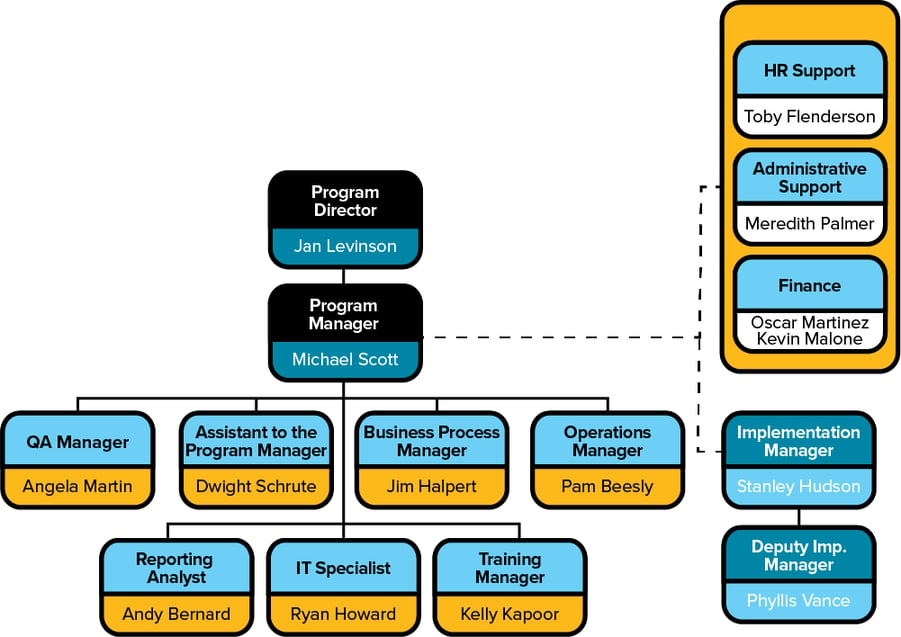
Example Organizational Chart
There may also be areas of your narrative that are very dense with key pieces of information that you don’t want to get lost in long sentences. These may be places where you can insert a table to improve the readability of your proposal. Some good areas for you to present in tables would be:
- Features and Benefits
- Tools and Solutions
- Roles and Responsibilities
- Risks and Mitigation Strategies
"Images are processed between 6 and 600 times faster than language."
It is also important to remember that graphics and tables are just as much a part of your review and recovery process as your narrative sections. You should always assess current graphics and tables during every recovery phase to ensure they align with any edits or adjustments made in other areas of the proposal, and that they are still clear, responsive, and relevant to the narrative.
In Conclusion: Effective Recovery Strategies Make Strong Proposals!
By following a strategic process and guiding your team through specific recovery activities, you can be sure that your proposal is undergoing a strengthening and development period instead of just responding to edits in a non-methodical way.
This approach will guarantee a more highly rated and comprehensive proposal going into the next review phase and will save you time and energy in responding to the same problem areas over multiple review phases! It will also provide your team with clear, defined processes that set everyone up for success.


